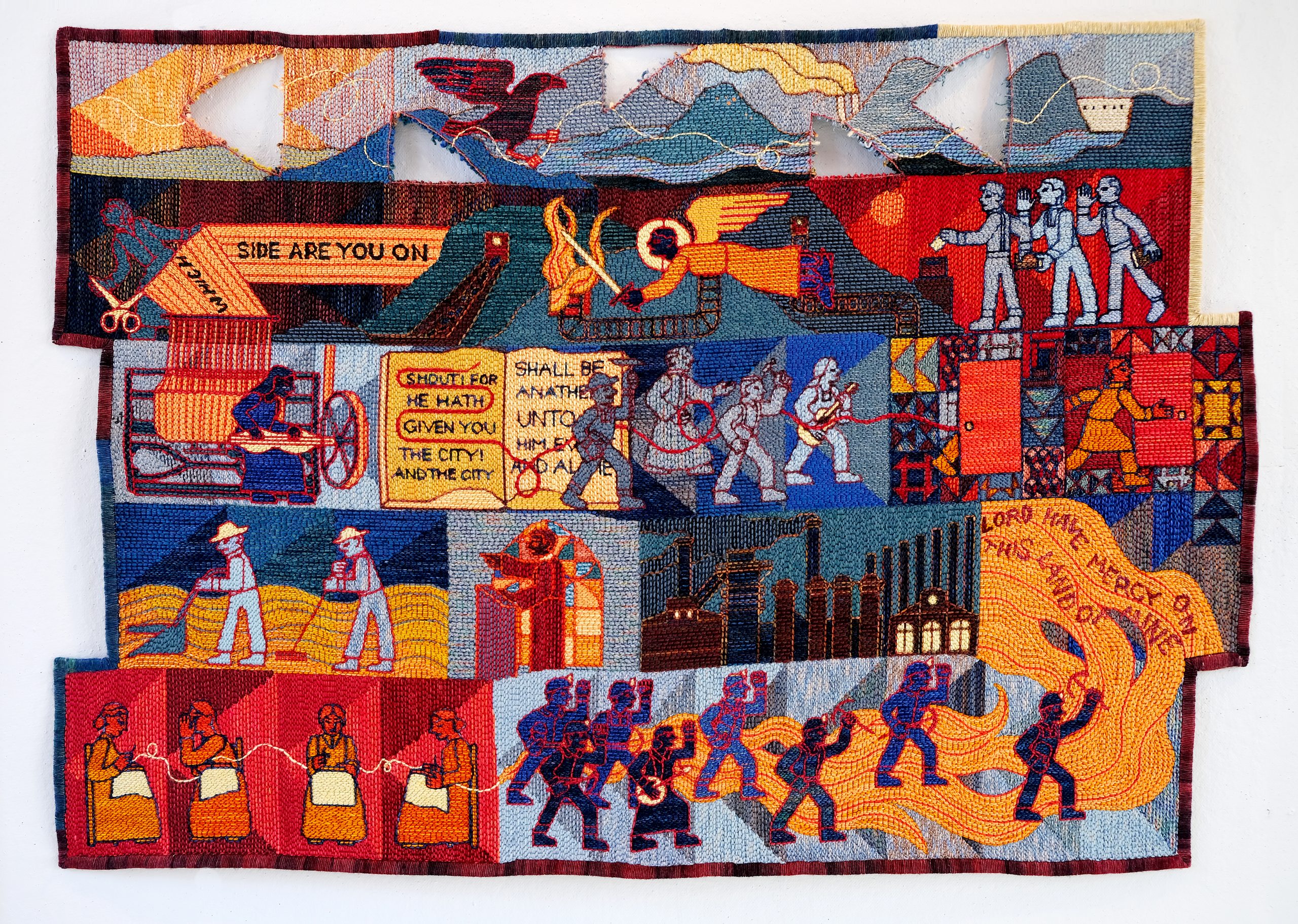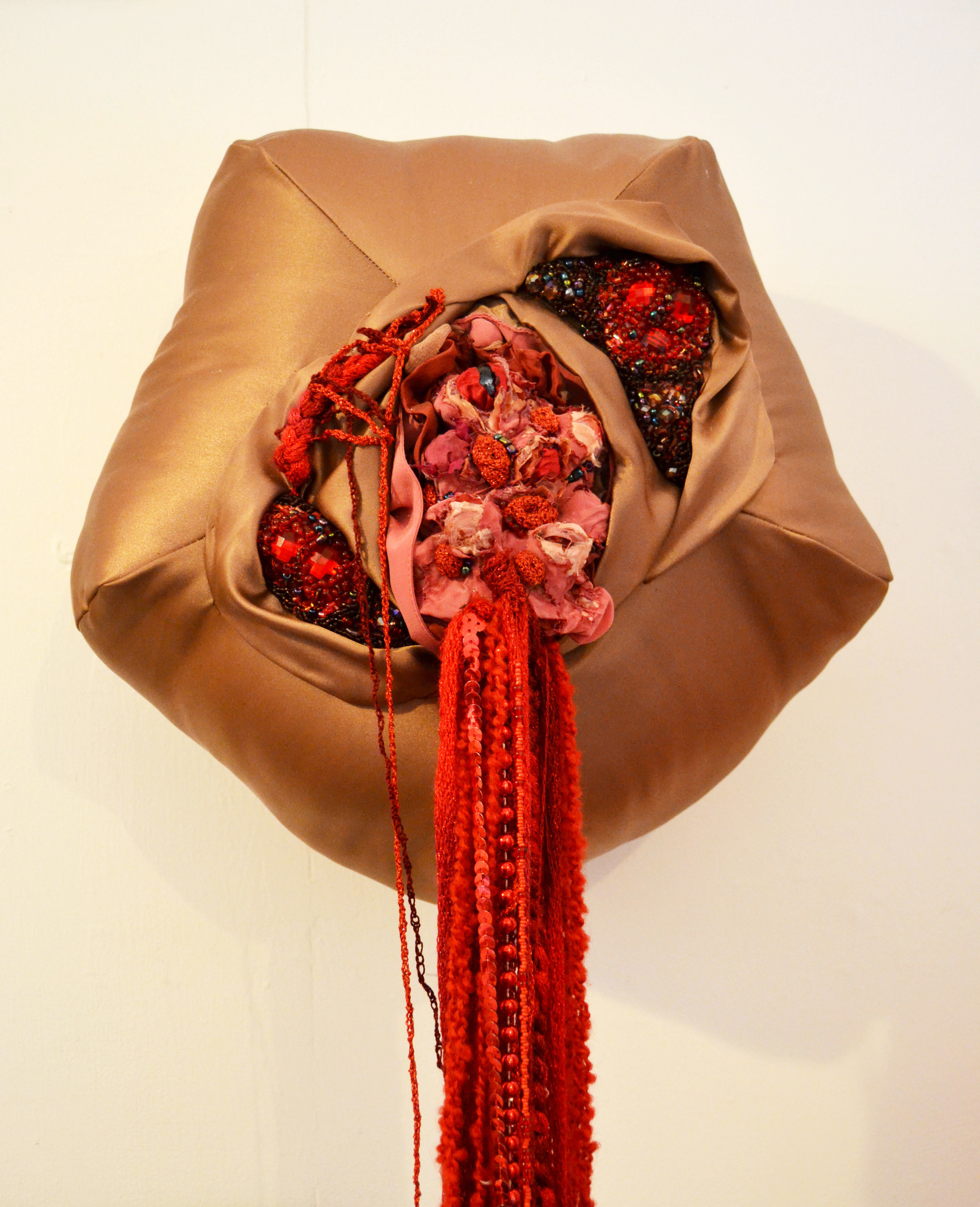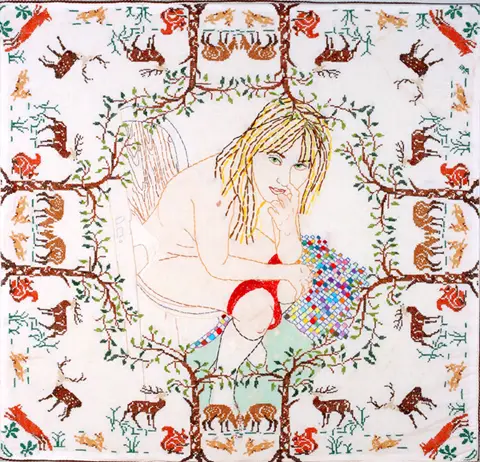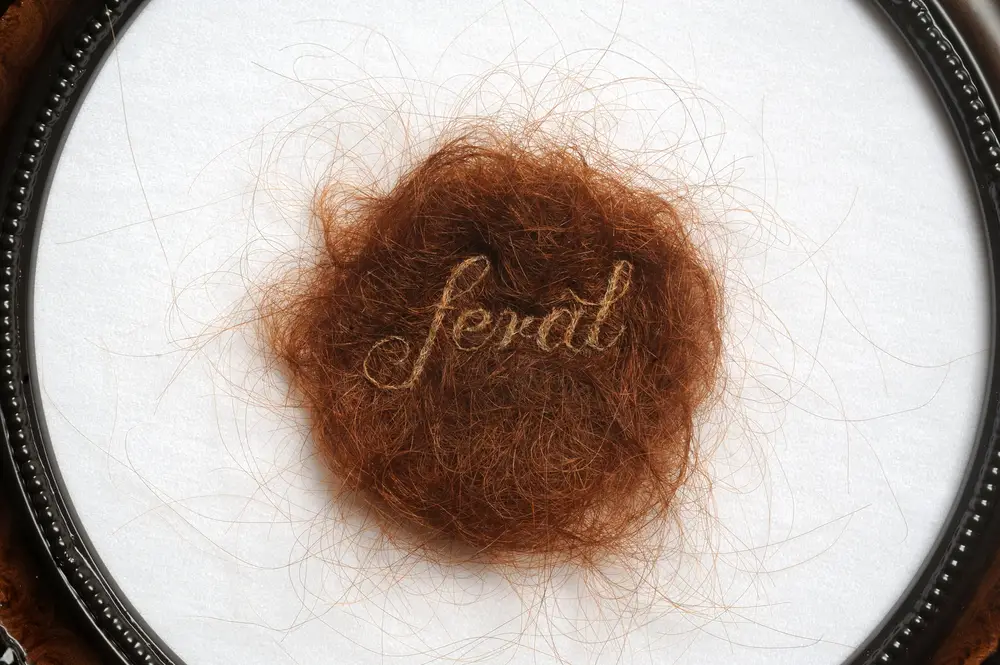Tabitha Arnold is a textile artist based in Chattanooga, Tennessee. When I first discovered her work on Instagram, it first reminded me of beautiful hand-crafted medieval tapestries I’d studied in books like The Subversive Stitch. It is so exciting to see contemporary textile art capturing the intricacies of ancient textiles, yet being used to tell modern narratives.
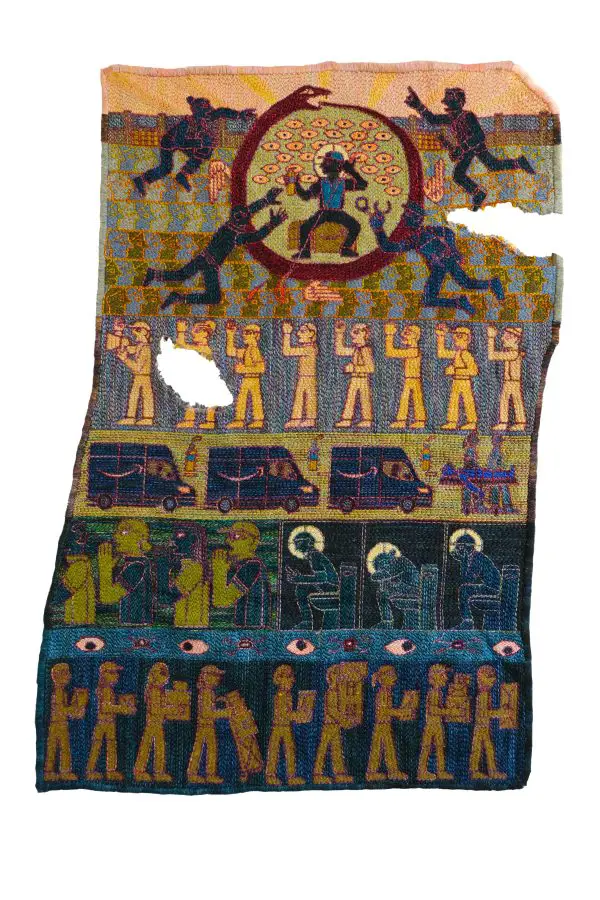
As Tabitha much more eloquently puts it:
My punch needle embroidered rugs contribute to a long tradition of fiber art as vessel for alternative histories from marginalized, working-class people. I’m inspired by the history of the international socialist struggle, as well as my own direct experiences as a wage worker, organizer, and artist coming of age during a wave of class-consciousness.
To tell the stories of labor revolt and people’s liberation, I borrow symbols of martyrdom and sainthood from Christian iconography. In part, I am drawing these images out of my childhood on the Bible Belt, taking advantage of the moral framework with which I was raised.
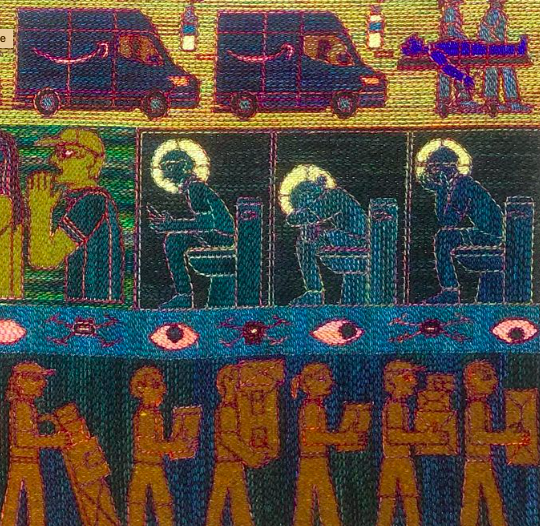
My work critically explores the symbiotic relationship of American evangelicalism with racial capitalism, yet embraces the contradiction of a deep South that historically used spirituality as a tool of radical liberation.
I imagine my pieces as future artifacts. I hope they survive my generation to tell the story of our struggle from a working-class perspective, using images and symbols to transcend language throughout time.
From Afghan war rugs to the quilts of Gee’s Bend, my work adds to a historical record that challenges and subverts mainstream narratives from a soft, nostalgic, and unexpected place.
It is special to see work directly derived from lived experiences. Reflecting the cultural landscape in which an artist lives and works documents history straight from the mind and eyes of the people.
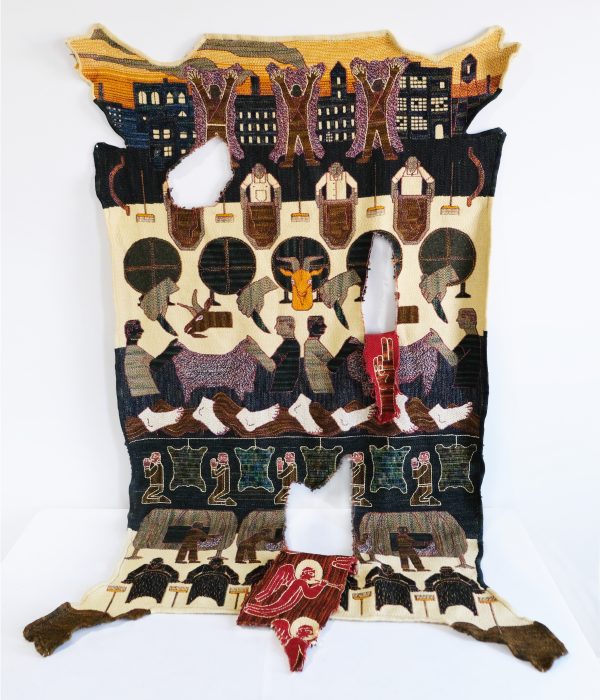
How did your technique evolve?
I thought I was a painter until my last year of art school. I had been trying to force myself into a classical painting practice, but I didn’t find any joy in the medium. One day I followed my curiosity to Youtube, where I watched some instructional videos on tapestry weaving.
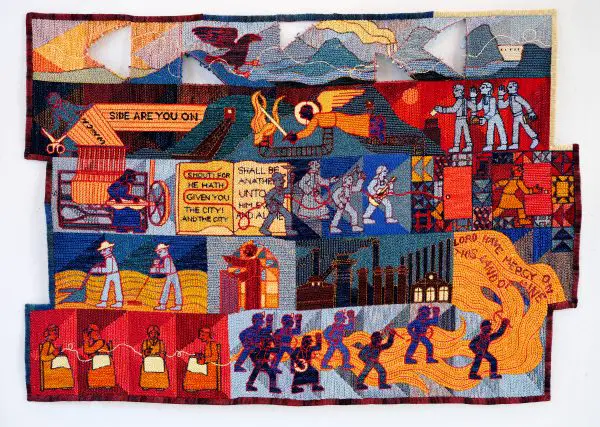
I made a loom out of canvas stretcher bars and got to work making small woven artworks. Eventually, I built a bigger tapestry setup and learned how to use a floor loom, but I still felt that weaving was too tedious and indirect for the kind of representational images I wanted to make. About a year into my weaving journey, I saw another fiber artist using a punch needle, and I knew right away that it would be perfect for me.
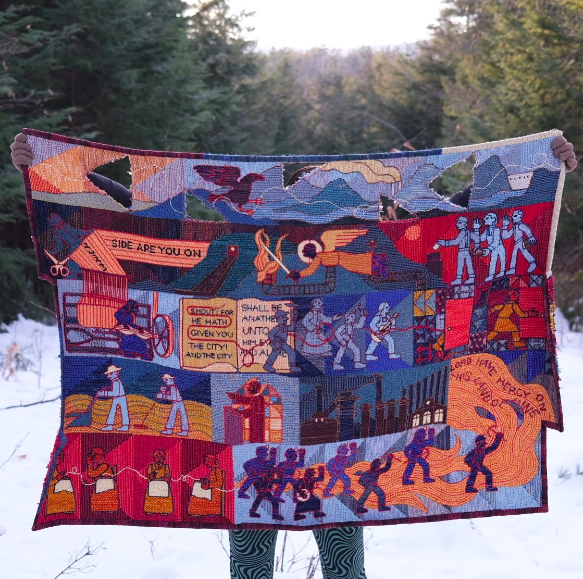
In my early experiments with making hand tufted rugs, I realized I liked the flat “back” of the finished piece more than the shaggy, tufted front. I started to show the back as the final image, using the punch needle more like an embroidery tool. The resulting artworks are large tapestries with stitching patterns that resemble embroidery, but using chunky, worsted-weight yarn instead of fine thread or floss.
I love hearing when an artist has experimented with lots of different practices. It takes time to find a style that works for you and as you can see, Tabitha has found the perfect technique to produce her tapestry stories. The thicker thread also means that larger-scale work is more achievable.
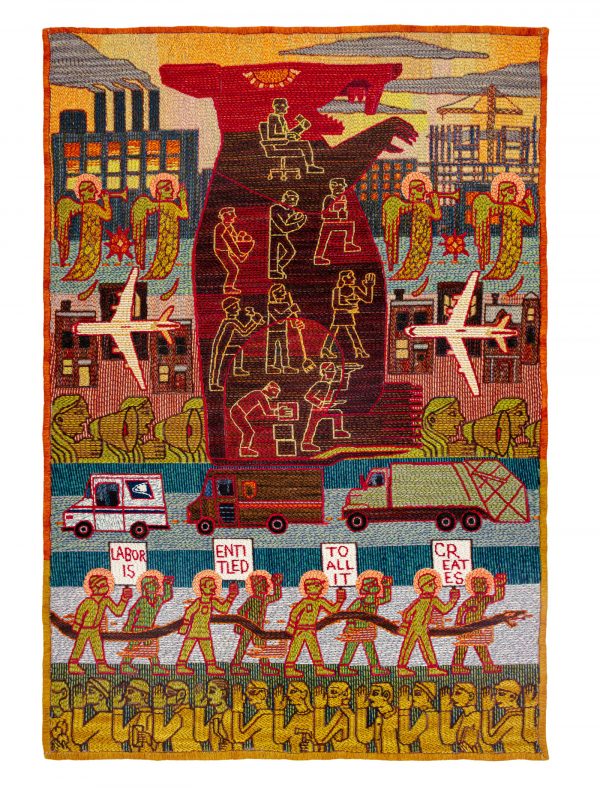
Where do you think your creativity is taking you?
Although I love making textiles, I think eventually my practice will grow to include a more durable medium that can live in public space. I’m interested in mosaic, stained glass, and painted murals. I’d love to make art that exists outdoors, so that anyone can freely enjoy it, not just museum-goers or wealthy art collectors.
I’m interested in how I can adapt and transform some tapestry elements into artwork for the public realm, so I can personally find it engaging and fun to create.
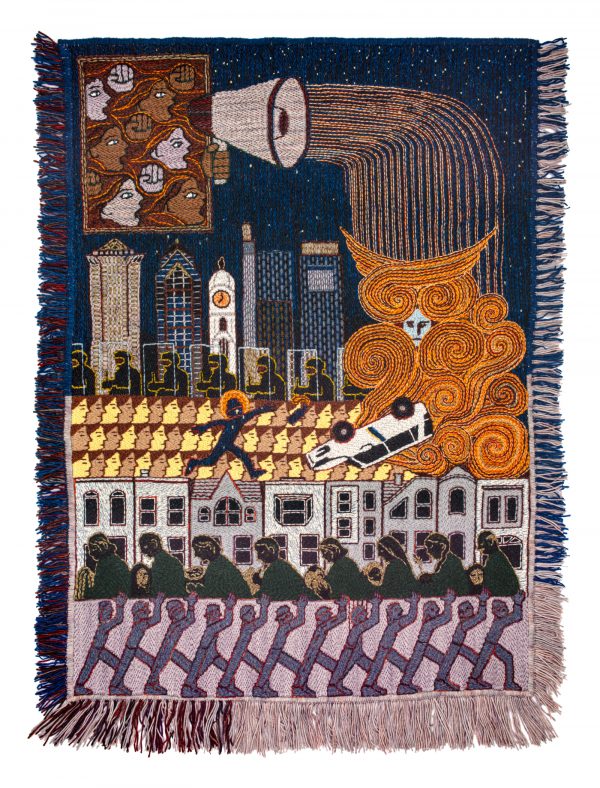
Although it is crucial that we maintain the skills of ancient crafts, we live in a very different world from when they were critical to a communities survival. You have to price high to ensure your labour is valued but this can also alienate potential buyers and viewers of your work.
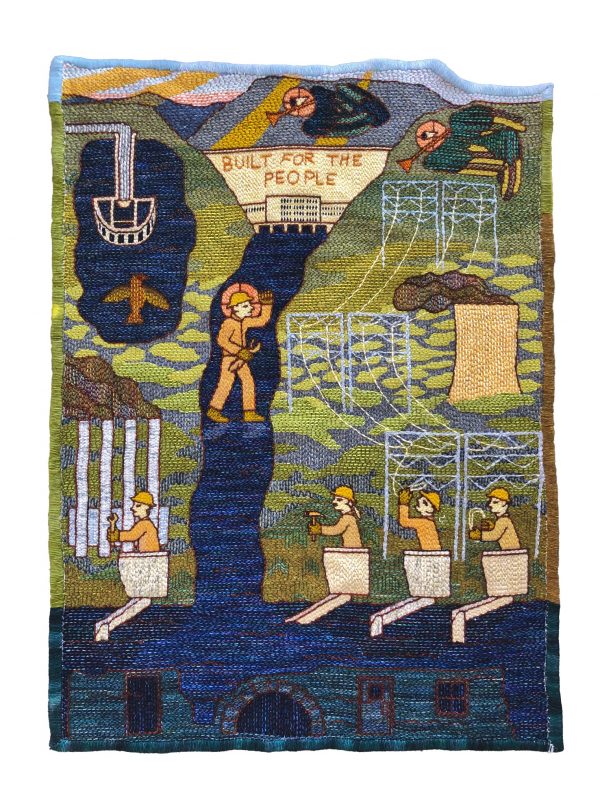
I completely appreciate Tabitha’s drive to other more inclusive mediums where audiences may be able to view the work for free. Her tapestries are beautifully executed, but it is also exciting to imagine what her messages could look like using alternative materials.
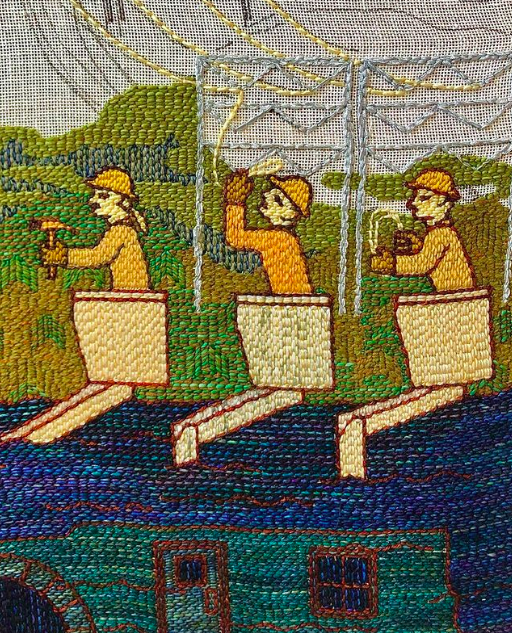
What other artists inspire you?
I first wanted to learn fiber art because of the work of Ann Hamilton and Sheila Hicks. I’m very inspired by Faith Ringgold, Magdalena Abakanowicz, and Howard Finster, as well as collectives like Gee’s Bend, Palestinian Liberation Artists, and Mexican Muralists.
What is your favourite tool to use in your practice?
My Oxford Punch Needle! I mostly use the #14 Mini size.
Punch needle work has increased in popularity, especially in recent years, maybe this is our sign to finally give it a go!
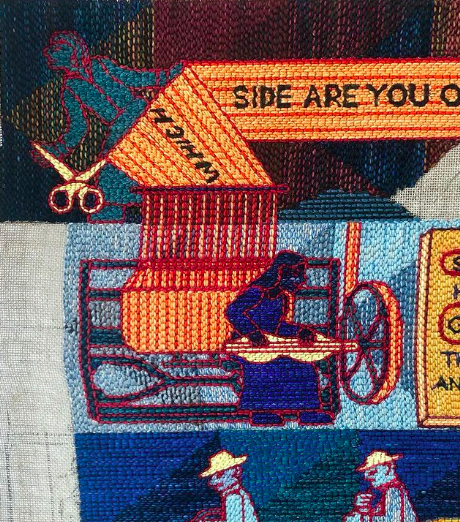
Can you share one creative tip with our readers?
Making your artwork should be FUN. Yes, the creative process has its moments of struggle and frustration, but your overall experience should feel great because you’re chasing a joy and curiosity that lives deep down in your gut.
Explore mediums, subjects, and ideas that truly interest you, and don’t worry too much about what other people think. I’ve found that once you start pursuing what’s exciting and fulfilling to YOU, other people can actually sense your genuine passion for it, and it makes your work more relatable and sincere to the rest of the world.
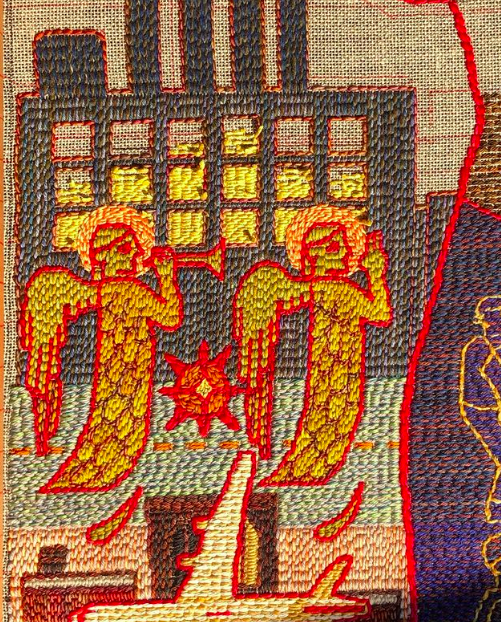
Tapestries have been created across history and across the world to tell the stories of the people – used as huge visual narratives for the reader to get completely absorbed by. It is a new goal of mine to view Tabithas work in the flesh. The scale of the pieces is mind-blowing and it would be a complete joy to experience this up-close.
I will finish by saying how comforting it is that Tabitha is creating work that will inevitably be studied and interpreted by those in the future. What a beautiful and memorable way to help our future ancestors understand the times we are living through today.
If you don’t already, be sure to support Tabitha by following her on Instagram and checking out her website.

